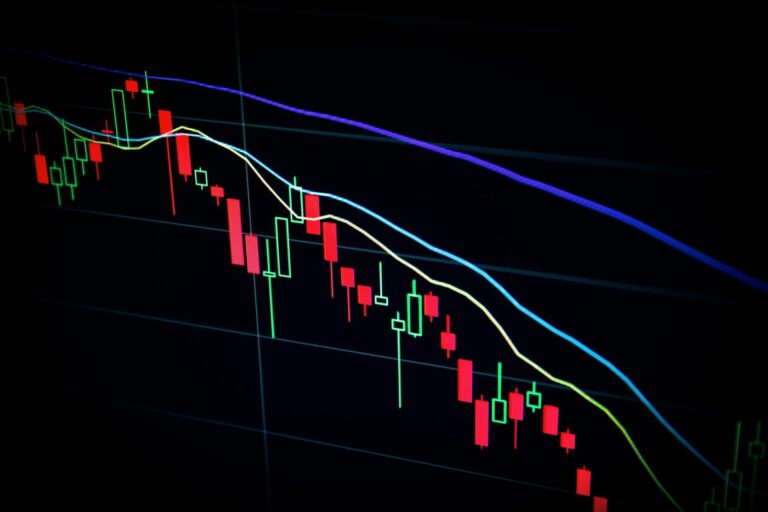In a world driven by digital innovation and financial transformation, new technology is always emerging. However, that technology can often be difficult to fully understand, especially when it is constantly changing and evolving. One example of this new technology is blockchain and digital assets — what does it mean, how does it work, and why should businesses care?
Matt Homer, an expert in the fintech space, recently visited the Salt Lake Chamber to shed some light on the subject. Homer is the managing member of The Department of XYZ, an early-stage venture fund that invests in pre-seed and seed stage founders who are building trusted financial systems of the future. He previously was the first-ever Executive Deputy Superintendent for Research & Innovation at the New York State Department of Financial Services, a member of the policy staff at the FDIC, and the Executive in Residence at Nyca Partners. With additional experience at Plaid, Quovo, USAID and Deloitte, Homer has a myriad of experience in the financial industry.
The easiest way to understand the blockchain, Homer explained, is by first defining money and finance. Nearly as old as humankind itself, money can be defined as a system of mutual trust. That system has enabled enormous amounts of human progress, such as agricultural urbanization, scientific revolution and digital innovation. Historically, money and financial services have always relied on intermediaries or a trusted third party that controls money systems. Usually, intermediaries are the governing bodies of society.
“While intermediaries have been very important to the history of money, one question that doesn’t get a lot of attention is: are they essential?” Homer said. “One reason many people are excited about blockchain is because they reduce the need for intermediaries.”
Imagine a blockchain as a digital ledger similar to a spreadsheet, but instead of being stored in one place, it’s duplicated and stored on many computers all over the world. When someone makes a transaction or adds information to this ledger, it gets verified by a network of computers and then added to a chain of previous transactions, forming a “block.” Once added, this block of information is locked and cannot be changed. This chain of blocks creates a secure and transparent history of all transactions or information stored on it, creating a shared, public database that is highly trustworthy due to its high security.
“Blockchain technology is radical because it posits that we have now reached a point where we can evolve beyond our reliance on intermediaries,” said Homer.
Intermediary-driven systems, he explained, come with notable drawbacks. They give users limited control, can exhibit gatekeeping and are closed systems. Blockchain technologies, on the other hand, decentralize financial systems, which some argue could shift more power back to individuals.
Even if blockchain never completely eliminates the need for intermediaries, Homer noted, there is reason to believe it could represent a major upgrade from our current system. Our current financial infrastructure is becoming outdated, and initial attempts to upgrade our financial system have been focused on digitizing pre-digital solutions rather than building digital from scratch. Homer believes the next major upgrade will be digital-native in order to support future economic growth.
Of course, this transition is not seamless. Homer’s first experience with blockchain was over a decade ago, when he tried to use Coinbase to buy enough Bitcoin to purchase a pencil sharpener. His bitcoin disappeared, but the pencil sharpener never came, with no record of the transaction. Situations like Homer’s, in addition to the negative press many cryptocurrency companies have gotten since, have made many people wary of the up-and-coming technology.
However, Homer explained that most of these issues aren’t because of the tech itself.
“The majority of the problems you’ve seen so far have been related to the humans involved, not the technology,” Homer said. “Despite all the negative headlines and losses people have endured, one of the things that’s most notable is that institutional interest has endured.”
Basically, despite its bad press, prominent financial institutions such as banks and other corporations are still taking an interest in blockchain technology. This means that the core technology is being recognized for its potential applications beyond just financial transactions. Its transparency, security and global accessibility are promising characteristics of a technology that might come in useful for individuals and businesses across the globe.
“So, where are we now?” Homer asked. “I would argue that the blockchain community is going through a cleansing stage. A lot of the bad business models have been weeded out, there’s more of a focus on principles and fundamentals.”
According to Homer, blockchain is here to stay. Yes, uncertainty will persist and optionality will be key, but the challenges facing the market today will only make the space stronger. His advice to individuals and businesses alike? Keep learning. Becoming familiar with technology, whether it be the good, the bad or the ugly, is never a bad idea.
The Department of XYZ is an early-stage venture fund that invests in pre-seed and seedstage founders who are building trusted financial systems of the future. Their mission is to bridge the cultural gap that can exist between government and founders — the Department of XYZ is trusted by both. For more information, reach out to info@departmentofxyz.com.


